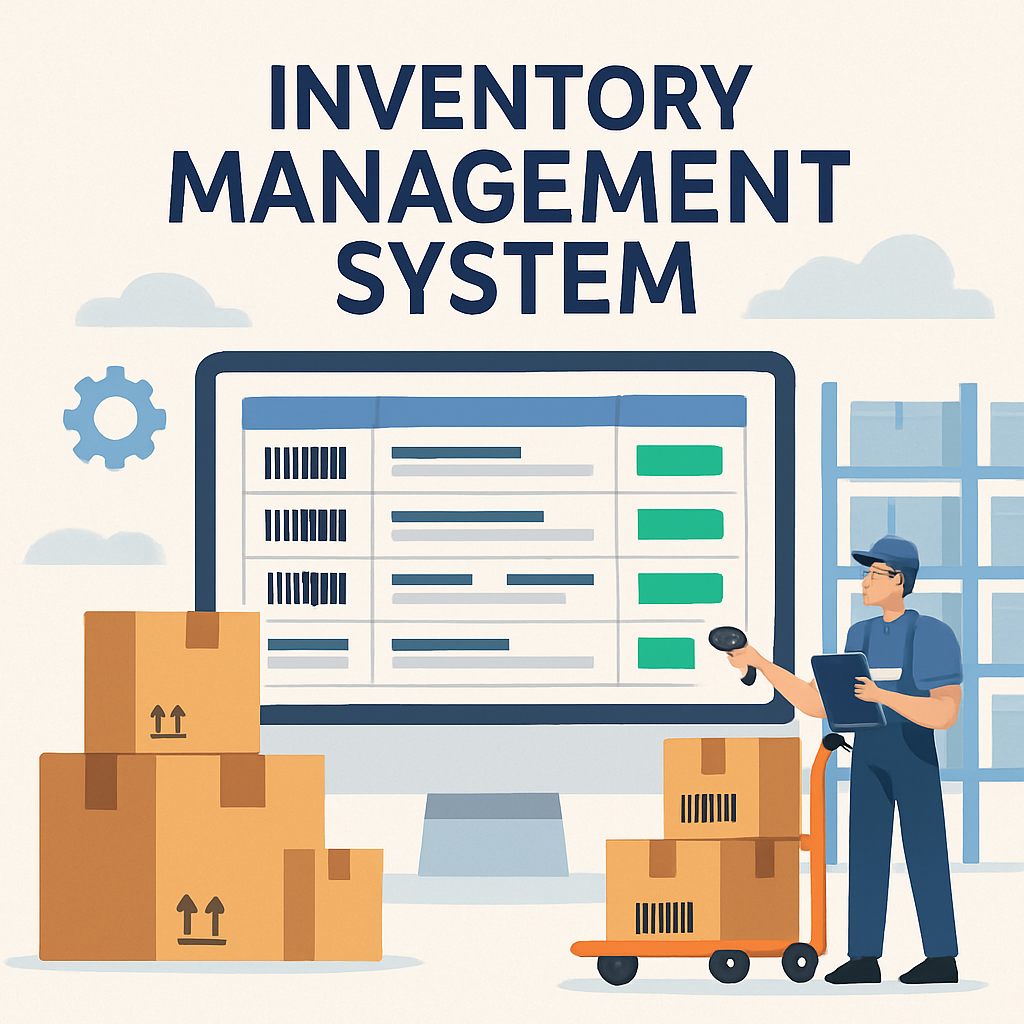The Ultimate How-to-Guide: Implementing an Inventory Management System in Malaysia for Small Business Owners
Introduction
For small business owners in Malaysia, the journey to sustainable growth and operational efficiency is paved with unique challenges. Among the most critical hurdles is the ability to control, track, and optimize inventory. Whether operating a bustling minimarket in Petaling Jaya, a bespoke F&B outlet in Malacca, or managing a fast-growing online store, the phrase inventory management system Malaysia signals both modern opportunity and necessity.
This in-depth guide demystifies inventory management for Malaysian SMEs: why it matters, how to select and implement the ideal system, and what practical steps can serve you best. Drawing on local case studies, actionable tips, and proven best practices, we’ll help you streamline processes, foster profitability, and empower your team—ultimately freeing up time to focus on business growth.
Why Inventory Management Matters for Small Businesses
Inventory is the lifeblood of any product-based business. For small businesses operating on razor-thin margins, poor inventory control can spell disaster. Without a solid strategy and supporting technology, issues like stockouts, dead stock, and theft can quickly erode profits and customer trust.
The Real Cost of Poor Inventory Management
- Stockouts: Lost sales, disappointed customers, and reputation damage.
- Overstocking: Cash tied up in unsold goods, higher storage costs, and increased risk of obsolescence.
- Manual Errors: Increased likelihood of mistakes, miscounts, and miscommunication between teams.
- Reduced Cash Flow: Inventory mismanagement traps capital that could be reinvested elsewhere.
Example: The Story of Fatimah’s Boutique
Fatimah, owner of a popular boutique in Johor Bahru, relied on handwritten stock ledgers. Constantly running out of fast-selling items and ending up with racks full of unsold merchandise, she was frustrated and on the verge of burnout. After implementing a simple but robust inventory management system tailored to the Malaysian market, Fatimah achieved a 30% reduction in inventory losses within six months. Her data-driven approach allowed her to identify bestseller trends and align her purchasing with seasonal demand, resulting in improved profitability and happier, returning customers.
Key Benefits for Malaysian SMEs
- Cost Reduction: Lower holding costs and reduced waste.
- Customer Satisfaction: Avoid out-of-stock scenarios during peak shopping periods.
- Faster Decision-Making: Access real-time data to guide purchasing, sales, and pricing.
- Improved Compliance: Ensure adherence to Malaysian tax and regulatory requirements.
- Operational Scalability: Lay the foundation to grow from a single outlet to multiple branches or e-commerce channels.
Understanding the Malaysian Context
Malaysia’s small and medium-sized enterprises (SMEs) are the backbone of its economy, making up 97.4% of businesses and contributing almost 38% to the country’s GDP. The rise of digitalization and e-commerce—further accelerated by the COVID-19 pandemic—has reshaped both consumer expectations and operational demands.
The Evolving Market Landscape
- Digital Economy: Platforms like Lazada, Shopee, and Grab now dictate new standards for inventory accuracy and speed.
- Regulatory Shifts: Regular updates to SST (Sales & Service Tax), e-invoicing, and banking integration requirements make compliance a moving target.
- Multi-channel Sales: Malaysian SMEs increasingly operate across retail, online, and wholesale—each with distinct inventory challenges.
Regulatory and Logistical Considerations
- GST/SST Compliance: Ensuring your stock control software produces compliant invoices and reports for Malaysia’s tax authorities.
- Localized Support: Bahasa Malaysia or Mandarin-language customer service, compatibility with local business practices.
- Banking Integration: Ability to sync with local banks and MYOB accounting for seamless payment reconciliation.
Example: Café Kopi Kita in Kota Kinabalu
When Café Kopi Kita opened a second branch, their manual stock system collapsed under the complexity of tracking ingredients and consumables purchased at different prices. Upgrading to a cloud-based inventory management system with native integration for Malaysian tax codes simplified reporting and enabled mobile access for staff at both locations.
Key Features of an Inventory Management System
An inventory management system Malaysia must balance robust capabilities with ease of use, especially for resource-strapped small businesses.
Essential Features
- Real-Time Stock Tracking: Instantly view stock levels across one or multiple locations.
- Batch & Expiry Date Tracking: Especially vital for food, pharmaceuticals, and cosmetics.
- Multi-Location Management: Seamlessly oversee inventory for several physical and online stores.
- Barcode & RFID Scanning: Rapid data entry and minimized manual errors.
- Automated Reordering: Trigger notifications or purchase orders when stock hits minimum thresholds.
- Supplier Management: Monitor supplier performance, track deliveries, and automate communications.
- Customizable Reporting: Generate sales, inventory turnover, and audit reports in formats accepted by LHDN (Malaysian Inland Revenue).
- Regulatory Compliance: Built-in modules for SST/GST, e-invoicing, and accounting integration.
Optional, But Powerful Features
- Mobile App Access: Enables staff to check inventory, receive goods, and fulfill orders from anywhere.
- E-Commerce Integration: Sync with Shopee, Lazada, Shopify, or WooCommerce stores to prevent overselling.
- Demand Forecasting: AI-driven tools that predict sales trends and optimize stock levels.
- User Permissions: Restrict sensitive actions to managers or trusted staff, reducing chances of fraud.
Evidence of Impact
A study by Software Advice found that businesses implementing digital inventory systems achieved:
- 20% improvement in inventory accuracy
- 15% reduction in shrinkage
- Quicker audit cycles and less staff time spent on manual counting
Choosing the Right Stock Control Software
Step 1: Define Your Needs and Constraints
- Scale: Is your business single-outlet or multi-location? Planning to expand?
- Sales Channels: Brick-and-mortar, web store, social commerce, or a mix?
- Compliance Requirements: Does your business require SST/GST, or are you planning to export (with more complex documentation)?
- Localization Needs: Support for Bahasa Malaysia or other local languages.
- Budget Constraints: Evaluate total cost of ownership (licenses, training, upgrades).
Step 2: Research and Shortlist Solutions
Widely Used Local Solutions
- AutoCount Inventory Management: Malaysian-designed, strong in compliance features, and widely used by local SMEs in retail and F&B.
- SQL Account & Inventory: Popular for businesses needing robust accounting and inventory under one roof, with SST support built-in.
- Million Inventory: Tailored for small retailers with simple workflows, affordable subscription models.
Popular International Software
- Zoho Inventory: Cloud-based, flexible integration with e-commerce platforms and major courier services.
- QuickBooks Commerce (formerly TradeGecko): Ideal for SMEs selling across multiple channels and markets.
- inFlow Inventory: Praised for user-friendly mobile apps and multi-user access.
Example: Chen’s Hardware, Penang
Chen upgraded to SQL Account & Inventory after struggling with slow, manual updates in his hardware store. SST-compliant reporting, local support, and WhatsApp-based notifications eliminated tax headaches and kept his diverse inventory—from nails to power tools—under control.
Step 3: Request Demos and Trials
- Most stock control software vendors offer free trials or live demos.
- Test the workflow, reports, and integration with your point-of-sale (POS) and e-commerce platforms.
- Consider involving your staff early in the evaluation to gauge user-friendliness.
Step 4: Support & Scalability
- Check if the provider offers localized technical support.
- Ask about upgrade paths, as your business may need more advanced features over time.
- Ensure data migration help is available if you’re moving from spreadsheets or another system.
Warehouse Inventory Tracking: Best Practices
Use Technology for Accuracy
Manual tracking using pen and paper or basic spreadsheets is time-consuming and error-prone. Invest in a low-cost wireless barcode scanner and compatible stock control software for:
- Faster stock receiving
- Immediate updating of quantity on hand
- Lower clerical mistakes
Organize for Efficiency
- Layout Planning: Allocate fast-moving items near packing/shipping stations; use clear bin and shelf labels.
- FIFO/LIFO: For perishables (e.g., food, cosmetics), employ FIFO (First In, First Out). For commodities with fluctuating prices, LIFO (Last In, First Out) may optimize profits.
- Clear Aisles and Paths: Streamline movement, reducing pick-and-pack times.
Audit Regularly
- Cycle Counts: Instead of an annual full stock-take, count select inventory sections weekly or monthly.
- Variance Analysis: Investigate disparities between system and physical counts. It can flag theft, spoilage, or data entry errors.
Warehouse Tracking Case Study: Ling’s Health Store, Klang
Switching to a combined POS and inventory management system with RFID tagging, Ling reduced stolen/misplaced goods by 60% and identified expiry risks weeks ahead of time. Regular cycle counts—guided by the system’s recommendations—proved less disruptive than shutting down for full audits.
Inventory Optimization Strategies
Inventory optimization means holding the right amount of stock at the right time—meeting demand without over-investing in slow-moving items.
ABC Analysis
Segment inventory by value and turnover rate:
- A-items: High-value, low-volume products. Require tight control and regular review.
- B-items: Moderate value or sales velocity. Manage with standard protocols.
- C-items: Low-value, high-volume goods. Order in bulk with minimal oversight.
Example:
An electrical shop in Selangor uses ABC analysis to prioritize weekly audits for expensive power tools (A), monthly audits for adapters (B), and bulk quarterly counts for screws and nails (C).
Just-in-Time (JIT) Inventory
Order inventory so that stocks arrive just as you need them, lowering storage costs and reducing spoilage. This works best with reliable suppliers and predictable demand.
Tip:
SMEs sourcing from local suppliers in Peninsular Malaysia often arrange weekly deliveries for top-selling goods instead of large monthly shipments, reducing excess stock and increasing freshness.
Demand Forecasting
Leverage historical sales, seasonality, and promotions data. Modern inventory management systems employ AI to recognize patterns and suggest optimal reorder points.
Example:
A retailer in Shah Alam boosted sales by prepping extra Raya hampers in line with forecasted demand from previous years, avoiding both shortages and waste.
Set Par Levels
Determine the “floor” (minimum) and “ceiling” (maximum) for stock. Automate reordering when products hit the floor, ensuring you’re never caught empty-handed.
Inventory Optimization in Practice: Azura’s Stationery Shop
Before implementing ABC analysis and par level automation, Azura’s shop had frequent pencil and notebook stockouts, with backroom overflows of old planners and outdated diaries. One year after systematizing reordering and categorization, overall inventory turnover improved by 32% and dead stock was reduced by 45%.




